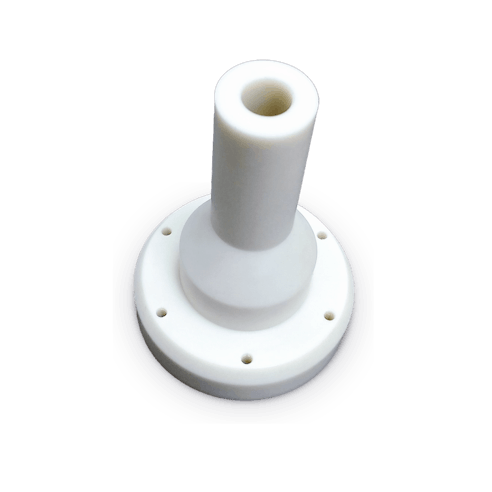CNC Machining in HDPE
High-Density Polyethylene or HDPE is an engineering plastic that is employed extensively in the packaging industry. CNC machining in HDPE can also be used to create components for the construction, electrical, and automotive industries, among others. HDPE has an excellent strength-to-weight ratio, as well as good chemical and moisture resistance.

About HDPE for CNC Machining
HDPE is sometimes called PEHD (polyethylene high-density) and is part of the polyethylene (PE) family of plastics. Despite its name, HDPE has only marginally higher density than LDPE (low-density polyethylene). However, the difference in strength between the two plastics is more significant than the difference in density. This makes HDPE a great choice for applications that require high strength and low weight. CNC machining in HDPE is similar to that of other engineering plastics.
| Applications | Advantages | Disadvantages | Lead Time | Price | Tolerances |
|---|---|---|---|---|---|
Applications Piping, conveyor screws, packaging and containers | Advantages High chemical and moisture resistance, high strength-to-density ratio, FDA-compliant for food storage | Disadvantages High thermal expansion, poor bondability | Lead Time Starting at 3 days | Price Medium ($$) | Tolerances Standard ±0.010"; ±0.002" are achievable; sub-±0.002" are available after manual review |
Generic HDPE
CNC machining in HDPE produces strong but lightweight parts. HDPE parts also have excellent corrosion resistance against a wide range of chemicals. Typical applications include boat components, piping, and containers.
| Tensile Strength, Yield (MPa) | Elongation at Break (%) | Hardness (Shore D) | Heat Deflection Temperature @ 0.45MPa | Melting Point (°C) |
|---|---|---|---|---|
Tensile Strength, Yield (MPa) 20-30 | Elongation at Break (%) >500 | Hardness (Shore D) 60-70 | Heat Deflection Temperature @ 0.45MPa 45-60 | Melting Point (°C) 130-137 |
Note: For reference only. Values can vary slightly depending on the grade, manufacturer, processing methods, and additives.
Finishes
Like other plastics in the PE family, HDPE is highly resistant to coatings. It resists adhesives for much the same reason and, as such, needs to be bonded via plastic welding. HDPE is most often available in white, but can occasionally be found in other colors. We recommend leaving HDPE parts in their "as-machined" state for the reasons mentioned above.
As Machined: The challenges of CNC machining in HDPE are similar to those experienced with other engineering plastics. The machined surface of HDPE has a matte finish.
Bead Blast: For a more uniform surface finish, the part can be bead blasted with fine glass beads to remove tooling marks and increase the matte appearance. However, bead blasting plastics may cause uneven surfaces or may damage finely detailed features.

Cost-saving Design Tips
CNC machining in HDPE can produce lightweight and low-cost components. Below are some additional cost-saving tips to make production more economical.
Sub-assemblies: HDPE is purchased as sheet or bar stock in varying sizes. Designing parts as separate components that can then be assembled into the final whole is often a good idea. As mentioned above, HDPE does not work well with adhesives but can be welded. Alternatively, mechanical fasteners can be used to bolt components together.
Tolerancing: Due to its tendency to expand heavily when exposed to heat, achieving extra-tight tolerances in working with HDPE can be challenging. We recommend only calling out tolerances tighter than +/- 0.010" when necessary to reduce the increased scrap, cost, and lead times associated with tight tolerances on plastics like these.
Find more design tips in our CNC Machining Design Guide.
